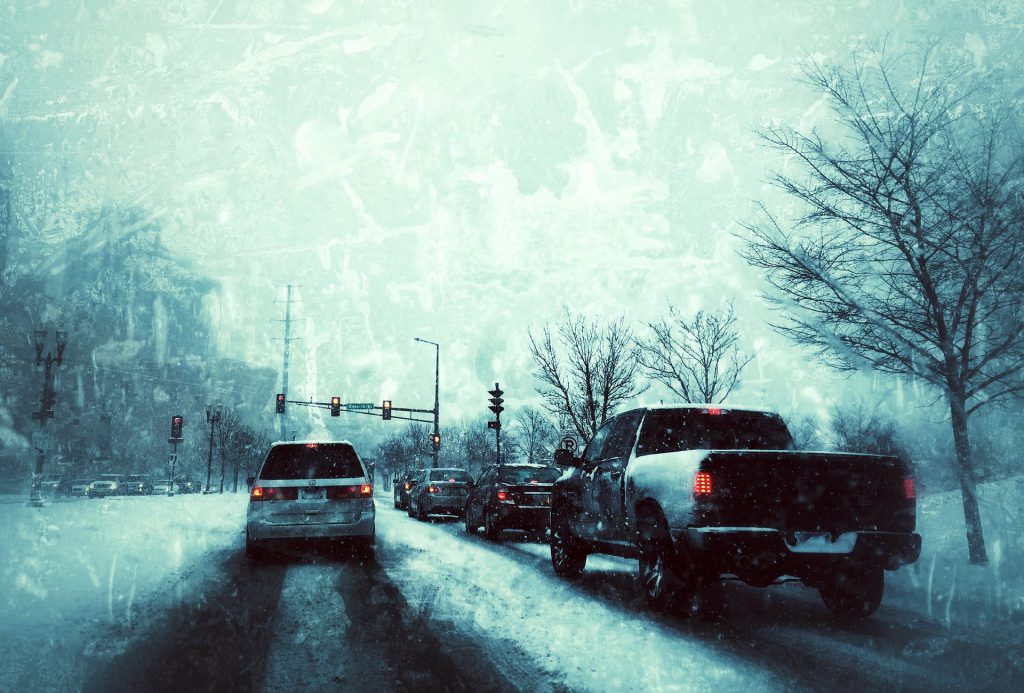
Image Courtesy of Pixabay
As fall draws to a close, and winter rolls in, the dangers of road construction work become increasingly dangerous. Safety should always be a top priority all year long! However, the following outdoor winter safety tips will ensure you’re protected from high winds and cold temperatures. Here are six outdoor winter safety tips to implement this year.
HYDRATE
We know the importance of staying hydrated during the summer, but did you know it’s just as important during the winter? Whether it’s 110 or 45 degrees, drinking enough water – 3 to 4 liters per day on average – ensures you don’t become dehydrated when working, exercising or playing outdoors. Water (plain or fruit infused), hot herbal tea, hot chocolate, and electrolytes work as a good source of hydration.
BUNDLE UP
Layering is the golden rule for staying warm in the cold. However, selecting the right combination of base layers, jackets and shoes can be daunting. Base layers, like synthetic materials and long-johns, keep the body’s core warm. This in turn helps warm the extremities. You can dress normally over the base layer. Your outermost layer should be wind, rain, and snow (if applicable) proof. As for your footwear, make sure that your work boots are both insulated and waterproof, as well as slip-proof.
MIND MOTHER NATURE
Although, working outside is part of a road construction worker’s job, workers should never work outside in extreme adverse conditions. Employers should watch the local weather and check the National Weather Service to ensure the safety of their workers. It is important to know when temperatures and conditions could make outside work dangerous. It is also advisable to provide adequate, warm break areas, during the winter.
WATCH FOR SIGNS OF ILLNESS
When working outside, it’s important to keep your body temperature regulated to ensure you don’t catch the flu, bronchitis, or hypothermia. Hypothermia develops when someone’s temperature falls below normal due to being exposed to colder temperatures. As hypothermia sets in, a person may quickly go from shivering to not shivering, become lethargic, and seem confused or dizzy. If you suspect hypothermia, make sure the affected person gets inside quickly in order to warm up, and dial 911.
DRIVE SAFELY IN ADVERSE CONDITIONS
It doesn’t matter where you’re going. It doesn’t matter whether you’re already running late. It doesn’t even matter that traffic is taking longer than usual. When you’re driving, 100% of your attention must be on the road, thus ensuring your safe arrival. Paying attention to the road, not tailgating, and abiding to the speed limit are all particularly important when driving in adverse conditions. Not driving safely during the winter can lead to people like you and road construction workers getting hurt.
WORK ZONE TRAFFIC SAFETY
Workers being struck and injured, or worse, is far too real. In fact, according to the U.S. Department of Transportation, 67,523 crashes were estimated to have occurred in work zones nationwide in 2013. In rain or excessively windy conditions, drivers may skid or lose control of their vehicles more easily. At L&L Asphalt, we take the time to set up all work zones with the proper placement of highly visible signs, cones, barrels, and barriers to protect our workers. Workers must also wear highly visible clothing including required vests.

No comments yet.